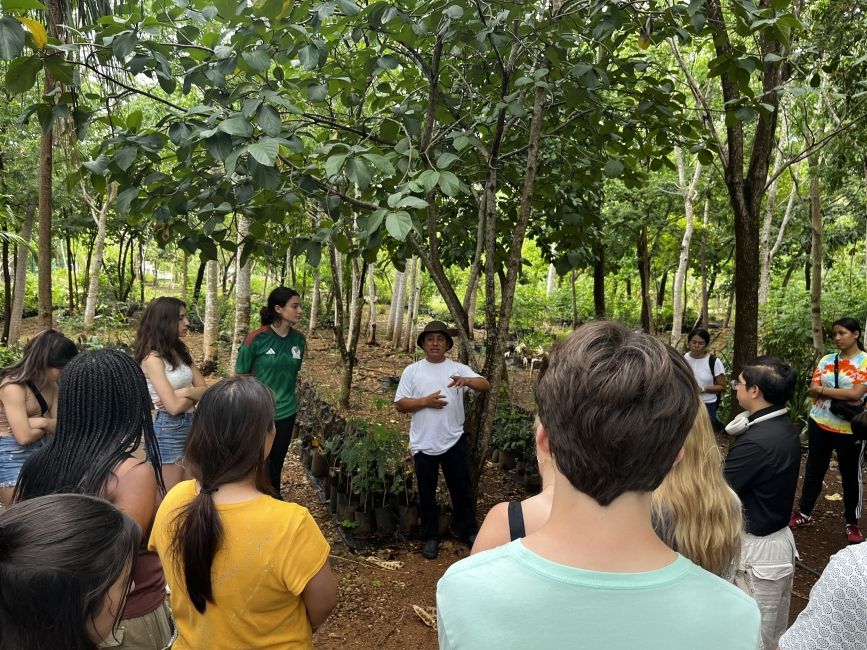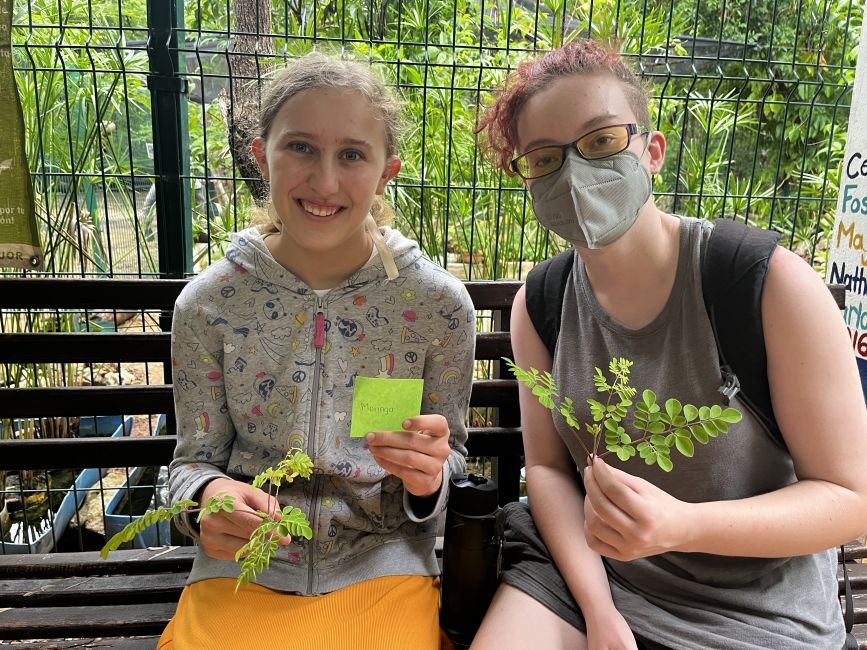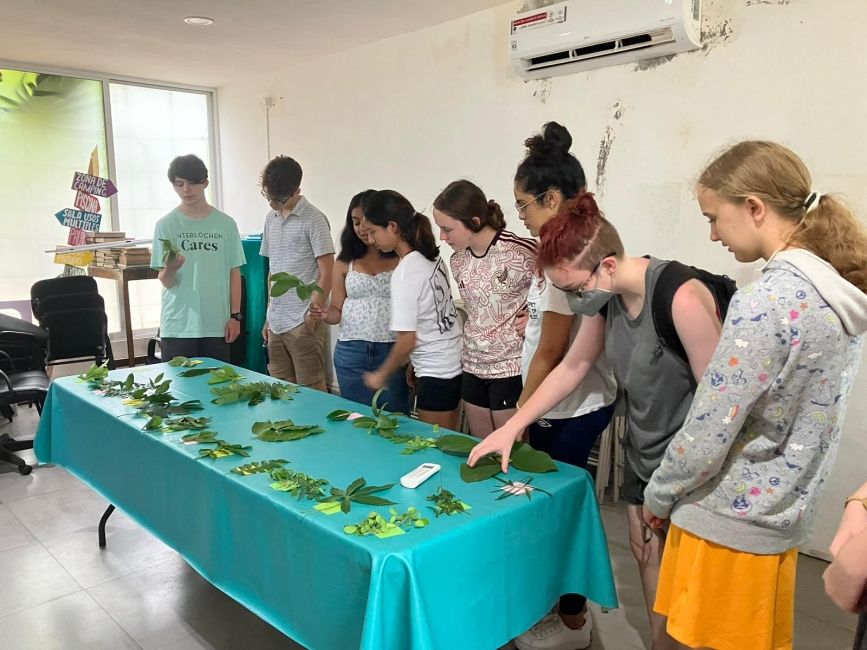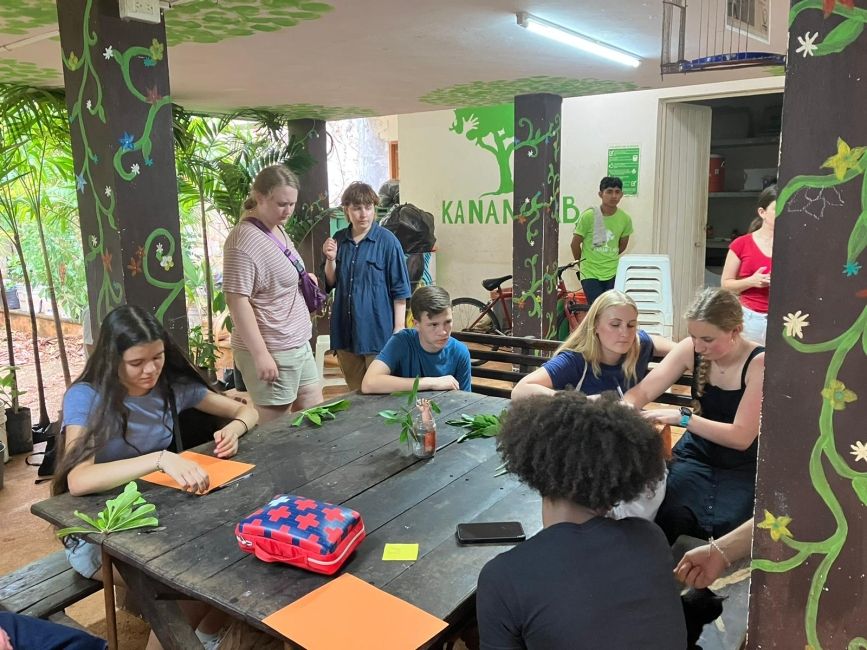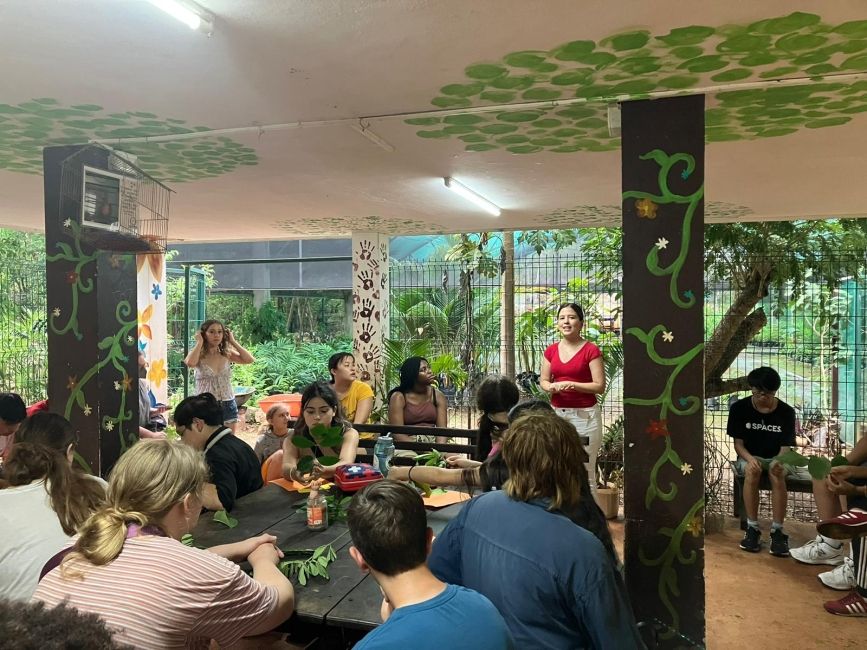Exploring interconnectedness in the Vivero
This past Tuesday the students had the opportunity to visit the plant nursery of Kanan Kaab. The nursery is located in the southern end of Mérida. In addition to growing and planting trees, Kanan Kaab also serves as an education center and offers free workshops and activities for youth who live in the surrounding neighborhoods. We arrived at the nursery after a hard afternoon downpour. The plants were glistening and looked happy to have the water after the dry hotspell we’ve had in Mérida.
Students were greeted by two staff members who care for the plants at Kanan Kaab. One of our guides, Foster, is a local plant expert who grew up learning plants’ names and importance from his family and community who have passed down their indigenous knowledge. Students followed Foster around the nursery learning the names and uses for different trees. We saw the Kanisté tree that is in danger of extinction and endemic to Yucatán. It has a yellow, sweet fruit and is also known as the Yucatán Peach. Students were surprised to learn of the Jaboncillo tree whose leaves can be used to make soap.
Foster spoke about the interconnectedness of life and showed us the example of their compost pit. The fallen leaves and organic material from the plants are added to the compost pit to create natural fertilizer that serves the plants once again. It’s a team effort really; the people work the compost to get it ready to spread and the fish in the pool next to it help to manage the mosquito population. Students were challenged to identify trees based on their leaves. They ran off with example leaves and came back with a match. Despite the mosquitos and humidity we all enjoyed the activity and left with new perspectives.
Related Posts
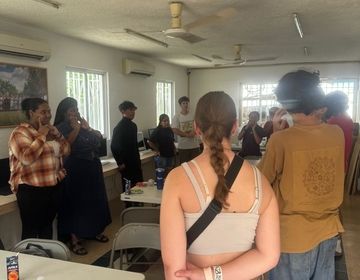
Hacienda Yaxcopoil and Community Conversations
On Monday, students traveled to Hacienda Yaxcopoil to learn about the production of henequén, which is used to make products such as ropes, bags, and other crafts. Although henequén was... keep reading
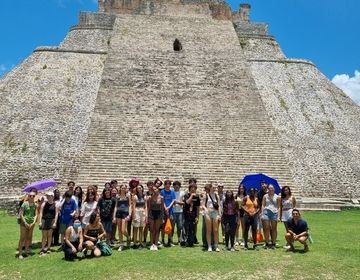
Uxmal and ChocoStory Museum
This week, our students traveled to the archeological site of Uxmal, where they saw buildings and pyramids from the Mayan civilization. They also learned about the legend of Uxmal, in... keep reading
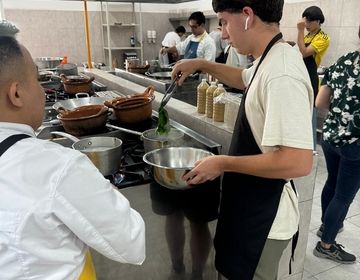
Cooking and the Zoo
This week has been busy! After our trip to Valladolid, we started the week off with a cooking class. Participants learned how to make chayitas, lomitos de Valladolid y arroz... keep reading
